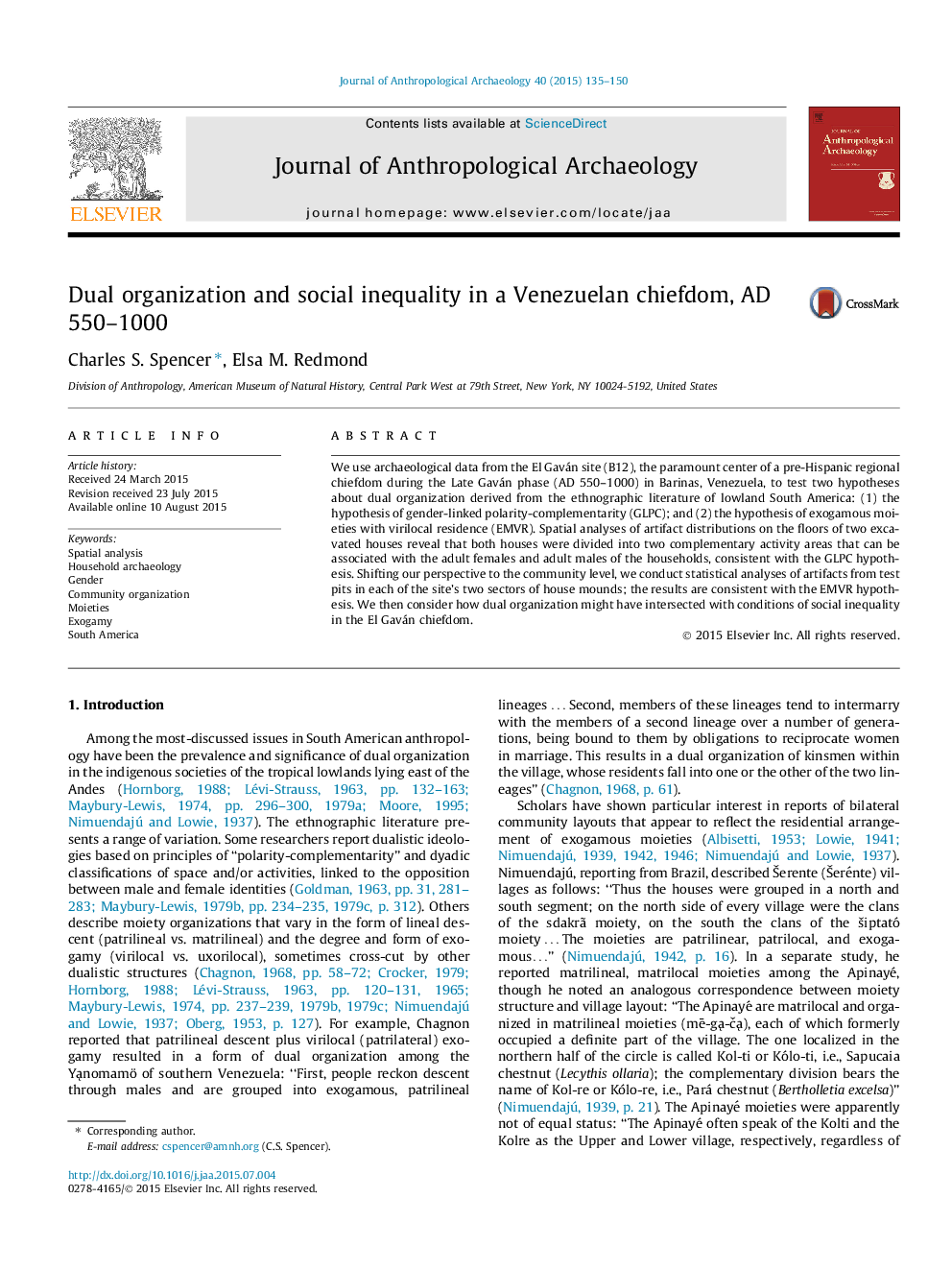| Article ID | Journal | Published Year | Pages | File Type |
|---|---|---|---|---|
| 7440519 | Journal of Anthropological Archaeology | 2015 | 16 Pages |
Abstract
We use archaeological data from the El Gaván site (B12), the paramount center of a pre-Hispanic regional chiefdom during the Late Gaván phase (AD 550-1000) in Barinas, Venezuela, to test two hypotheses about dual organization derived from the ethnographic literature of lowland South America: (1) the hypothesis of gender-linked polarity-complementarity (GLPC); and (2) the hypothesis of exogamous moieties with virilocal residence (EMVR). Spatial analyses of artifact distributions on the floors of two excavated houses reveal that both houses were divided into two complementary activity areas that can be associated with the adult females and adult males of the households, consistent with the GLPC hypothesis. Shifting our perspective to the community level, we conduct statistical analyses of artifacts from test pits in each of the site's two sectors of house mounds; the results are consistent with the EMVR hypothesis. We then consider how dual organization might have intersected with conditions of social inequality in the El Gaván chiefdom.
Related Topics
Social Sciences and Humanities
Arts and Humanities
History
Authors
Charles S. Spencer, Elsa M. Redmond,
